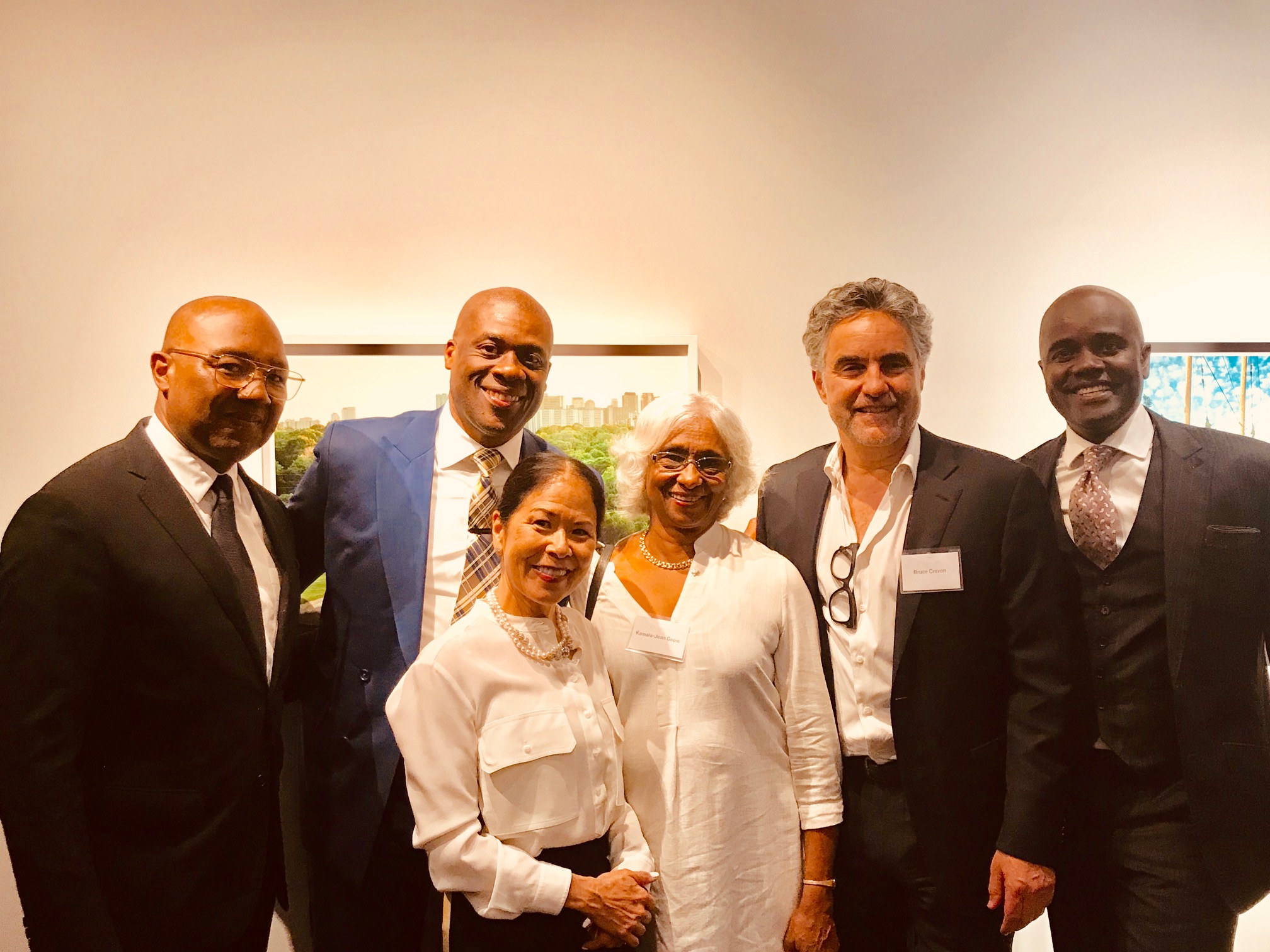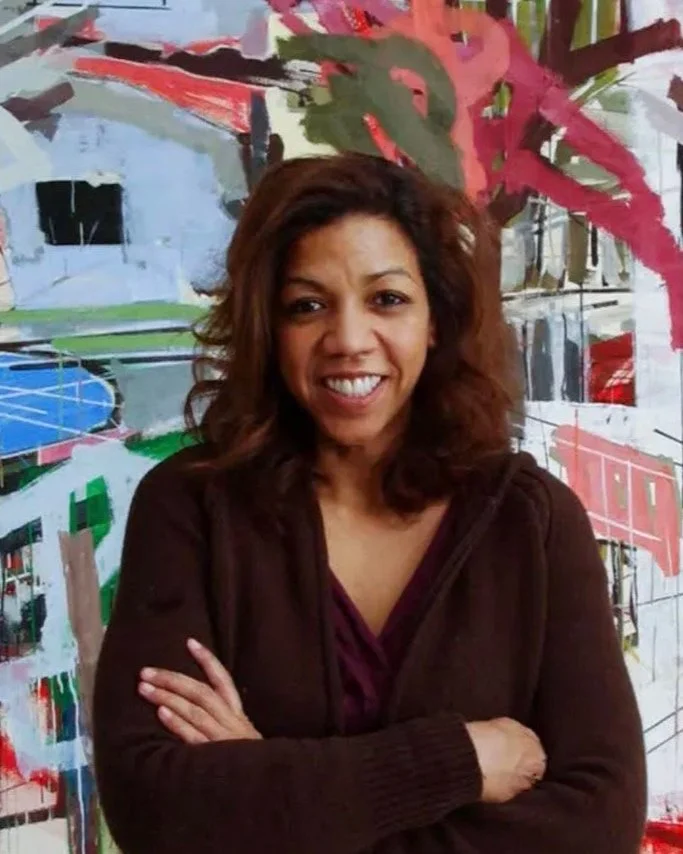Largest collection of Caribbean photographs housed at Art Gallery of Ontario
July 2, 2019
Dr. Kenneth Montague was like a kid in a candy store the first time he saw the Montgomery Collection of Caribbean Photographs.
Invited by Art Gallery of Ontario (AGO) assistant curator of photography Dr. Julie Crooks to view photography collector & filmmaker Patrick Montgomery’s prized assemblage in New York in February 2018, Montague was in awe.
“I fell on my knees when I saw the collection,” said the dentist, art collector and curator. “This stuff is unbelievable. There’s so much diversity in the images. There were predictable White landowners standing there, walking stick in hand, and beside them is a slave brought from Africa or an indentured labourer from India. You are seeing your ancestors in a canefield and the image might be produced by a rum company to send back to the European owners and it’s showing this new place.”
J.W Cleary, Coconut Palms, Kingston Harbour, ca 1895
Montague, who was conferred with an honourary doctorate by the Ontario College of Art & Design in 2016, was sold on the collection the moment he saw it.
Crooks, who had learnt about it a few weeks earlier while in New York with AGO photography curator Sophie Hackett, approached Montague who is an AGO trustee and Education & Community Engagement Committee Chair.
“Julie said we need to acquire the collection and that Montgomery was willing to sell at the right price and it needs to be at the right place,” he said. “She insisted it should be in a public institution and not in someone’s living room and she reminded me of the conversations we have had about owning our work so that we can control how and when it is shown.”
Members of Toronto’s Black and Caribbean communities raised more than $300,000 to bring the collection to the AGO. The singular collection of more than 3,500 historical images from 34 countries is one of the largest of its kind and a visual record containing studio portraits, landscapes and tourist views.
Unknown, Martinique woman, ca 1890
Prior to this, the AGO held no Caribbean photographs in its collection.
“The thing about this collection is that it tells a lot of stories visually,” said Crooks who curated and co-curated several exhibitions in the city, including ‘No Justice, No Peace: From Ferguson to Toronto’ and ‘Power to the People: Photography and Video of Repression and Black Protest’. “The stories that are told are about the end of slavery, the period following emancipation and the complexities of this period. It is about labour and immigration and we see the kinds of influx of the Indian communities into places like Trinidad.”
Having members of the city’s Black and West Indian community contribute to the acquisition of the collection was important for Crooks who also curated ‘Free Black North’ that featured photographs of people living in Ontario in the mid-to-late 1880s, many of whom were descendants of Black refugees who escaped enslavement in the southern United States.
Dr. Julie Crooks
“We really wanted a community ownership to start a legacy at the AGO,” she said. “With a community that hasn’t been represented in this way before in terms of patronage and support, I reached out to people with a wide network and had different groups come in to look at a small sampling of the collection. After that, it really wasn’t a hard sell as most of the people that came in made some sort of connection with the images and wanted to be part of the larger project.
“They are philanthropists and in the most part really new in terms of their giving and support to the arts, culture and heritage institutions. This is really unique for them. They took a chance. They had faith by just looking at the images that reflect a variety of their own experiences as immigrants to Canada with a familial understanding of their homeland in a way. It was really quite extraordinary how quickly many came on board.”
Lead donors Dr. Frederick Murrell – an orthodontist -- and his wife, Dr. Liza Murrell – a clinical psychologist -- are excited to be part of bringing this important collection of Caribbean photographs to the AGO.
Drs. Frederick & Liza Murrell
Liza Murrell, who is an AGO Education & Community Engagement Committee member, said some of the images resonate with her.
“I have Trinidadian roots and seeing a can of mauby, a drink that I had heard about but has never seen or consumed, was very moving,” she pointed out. “This is an opportunity for people to walk into the AGO and see themselves on the walls. Our kids, who have gone to the AGO on school trips, have never seen themselves displayed in this kind of way.”
Displaying and preserving these works in our diverse city, added her husband, is an exceptional opportunity for his family and future generations.
“We are one of the communities that have not taken full advantage of our own destiny and cultural identity,” said Frederick Murrell, one of three former University of Toronto Varsity Blues basketball players who have been named Canadian Interuniversity Sport All-Canadians and a member of the U of T Sports Hall of Fame. “When Julie and the AGO came to us, we felt it was an opportunity to get some control over the narrative about who we are and where we come from because, in a lot of instances, we don’t get to shape that narrative.”
Donette Chin-Loy Chang is proud to be a financial contributor.
“When our family migrated from Jamaica in the early 1970s, the wider Canadian society had little idea about our culture,” she said. “The Art Gallery of Ontario and the Royal Ontario Museum (ROM) taught us about the culture of others. I am proud of this collection as it lays the foundation for a footprint for Caribbean Canadians at the AGO in this the most diverse city and the wider Canadian mosaic for generations to come.”
Unknown, Glendiary Prison officials, Barbados 1909
Former Jamaica Canadian Association president Kamala-Jean Gopie is a member of the ROM Patron’s Circle that raises money to support the museum’s highest priorities.
“I am committed to the arts because that’s what tell our stories,” she said. “The Montgomery Collection is important because it’s a tangible record of time, place and people.”
The Montgomery Collection donors include Dr. Kenneth Montague, Justice Donald McLeod, Donette Chin-Loy Chang, Kamala-Jean Gopie, Bruce Croxon and Wes Hall
Montague stands out among the 27 donors in that he has always had a voracious interest in contemporary African photography and appears frequently as a panellist at international art symposiums.
At a very young age, art galleries appealed to Montague who saw his family story reflected in the photography of Harlem Renaissance leading figure James Van Der Zee, ultra-Renaissance personality Gordon Parks and the mural of prominent Mexican painter Diego Rivera.
Meeting late American artist Jean-Michel Basquiat in a nightclub and being introduced to cultural theorist Stuart Hall, who is one of his heroes, echoed his rich experience with Black culture in his teenage years.
In 1997, he converted part of his home into a commercial gallery space. The Wedge got its name from its appearance and is a metaphor for creating space for artists.
Bringing to life the changing economies, environments and communities that emerged following the abolishment of slavery, the Montgomery Collection includes nearly every photographic format available during the years 1840 to 1940, including prints, postcards, daguerreotypes, lantern slides, albums and stereographs.
Unknown, Jamaican women, ca 1900
Seeing the images through a modern lens, says Montague, changes the way people think about them.
“This is an utterly important collection because of the idea that we get to see ourselves in a new way looking at these images today versus when they were made,” he pointed out. “I see pride, love, family, community, Black style, defiance and a whole other range of qualities in the subjects in these photographs than perhaps was even the original intent. I think that that is a powerful thing to reclaim art work as your own.”
The Montgomery Collection is expected to make its debut in an exhibition in 2021.
“There is still a lot of research that has to happen before the show,” said Crooks who co-founded the Black Artists Network Dialogue (BAND) with Maxine Bailey, Karen Carter and Karen Tyrell in 2009. “In the meantime, I am trying to think about how I reach across to my counterparts in the Caribbean at various museums so we can begin a conversation about the history of photography in the region, what it means to have a collection like this here at the AGO and how we can continue these conversations.”
Felix Morin, Two women, Trinidad, ca 1890














